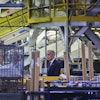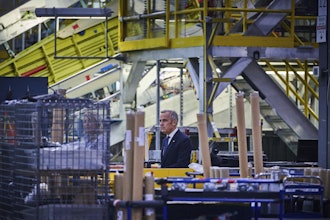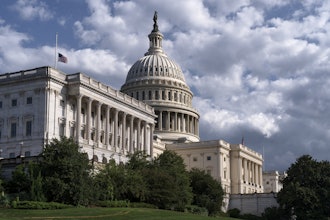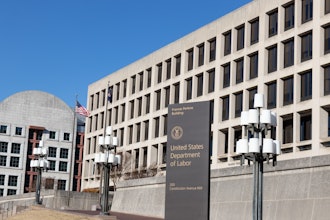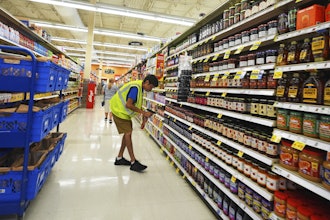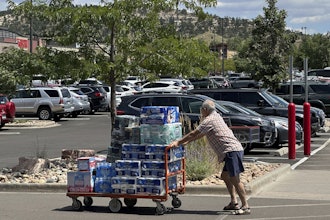
While the conversation around tariffs and the industrial economy is evolving daily, ITR Economics Senior Forecaster Connor Lokar believes that the underlying story for industrial distributors in 2025 could still be defined by growth.
Industrial Distribution: A lot of the information around tariffs is changing day to day. Which elements of this situation do you think are particularly important to be tracking right now?
Connor Lokar: I think, for us, our primary focus is from a high-level macroeconomic perspective. Ultimately, that’s our bread-and-butter here at ITR Economics and trying to understand the broader impact. One of the most important things that you have to do in considering any sort of economic policy is you have to judge it based on outcomes, not necessarily intentions. The intentions for generally all policy are well and good, but they rarely work out that way. And typically, in the world of economics and government policy, you’re trying to keep an eye out for unintended outcomes as much as intended outcomes. So, in theory, [tariffs] should generate some semblance of additional demand for domestic operators, domestic manufacturers, where if you wall out imported product via tariff to become, now, higher landed costs, that should ultimately drive volume to incumbent domestic suppliers — to their benefit.
Of course, there’s going to be other impacts, and one of those indirect impacts that we’re obviously concerned about is inflation. Now, I think the broader headline environment has maybe gotten a little too far out over their skis in terms of the inflation impact. Your ultimate additional incremental inflation pressure is not going to be a one-for-one tariff rate transposition to the total finished cost for consumers. But I think it’s legitimate to be somewhat concerned about any instance where we don’t have domestic suppliers of things that are being tariffed. Then the net result is it’s not really going to create demand for anyone, it’s just going to ultimately inflate the landed cost of that imported product.
Now, in the cases that we do have domestic manufacturers that are going to benefit from this, it’s probable anyway that they’re going to sell more, but also probable that they’re going to charge more because they’re rational market participants. And if they have the opportunity to charge more and sell the same amount or more, they’re probably going to do that. So the calculus for us: is this ultimate tariff journey going to generate enough inflation pressure to ultimately undermine what, currently anyway, is a favorable disposable income trend? And that’s one of the main ingredients that we view as a favorable trend line for the U.S. economy in 2025 and 2026. Our view is that the economy does expand in 2025 and 2026 for industrial businesses and others. And we still feel that way based on what we know so far, as far as tariffs are concerned. But that’s really what we’re going to be keeping an eye on going forward: is some of the unintended, additional inflation pressure going to threaten that or not, and does that assumption remain viable? The deeper end of this that we go, that’s what we’ll be keeping an eye on.
ID: Is this situation changing anything about your expectations for ‘25? We’ve been hearing a lot about how the “soft landing’”was a bit tenuous.
 Connor Lokar, senior forecaster, ITR Economics
Connor Lokar, senior forecaster, ITR Economics
If you look at industrial production, if you look at domestic manufacturing, if you look at wholesale channel data for almost all industrial data points, there actually was a recession in 2024 and even, in some cases, in 2023. So it’s not so much that we think we’re going to maintain a soft landing; I think we feel that there actually was already a hard landing, and it’s more that we’re now emerging out of that going forward.
And that is still the case now that we think that we’re going to see industrial market growth in 2025. But of course, as things currently stand, 10% on China and some aluminum and steel tariffs aren’t necessarily going to be fatal. But if we see a truly broad global escalation of tariffs, counter tariffs, reciprocal tariffs, that could change. But as we stand now, we’re not coming off of that growth 2025 growth forecast at this point; we’re projecting modest growth. We’re not expecting to blow the doors off, but an incrementally better year this year than last is our expectation at this point.
ID: I would love to hear what you would recommend for the industrial distribution segment in terms of how they might take a measured approach to this as they assess and respond to some of these circumstances as they arise.
CL: [Industrial distributors] have had a really challenging last 12 to 24 months depending on where they are.
Going forward, they’re just going to want to understand their supply risk and which supplier partners are exposed.
They’re going to want to look at some of their purchase contract language and see, are our suppliers going to offload basically all tariff inflation risk onto us? Is there language in there that they’re just going to pass that on? Can we expect that?
I would be considering building inventories to front-run this under the expectation that with or without tariffs, my inventory replacement cost is likely to be rising this year, and tariffs could make that happen even more quickly. So if I can fortify my inventory position and run that and have a nice pile of inventory to draw on as we sort this out and potentially have the opportunity to take some price of our own, if we’re sitting on some lower-cost stock that we loaded up on and then the pricing environment clearly changes to the upside, that could be favorable for them.
And I say that knowing that it’s not my working capital that I’m tying up to buy all this, but I know that their inventory overruns were a pretty significant pain point for a lot of distributors in the last two years where they got caught holding the bag and had to spend one or two years bleeding that off in very painful fashion. So probably not what they want to hear right now, but that would be my thinking: try not to get too trapped in what happened over the last two years and start planning and preparing for what’s going to happen over the next two years.
It’s going to be exciting. Maybe not in a good way, but there’s going to be a lot going on.
ID: Do you think, industry-wide, distributors are prepared?
CL: I’m sure some of them will get caught flatfooted, but I think they’re better prepared now than they might’ve been seven years ago when we had tariffs for the first time. So I would think that they at least kind of know what to do this time around, and hopefully won’t take as long to respond to this as the last time around, just given more recent experiences. That would be my hope anyway.
It’s just a very fluid situation, and we’re publishing a lot of free content right now, and some paywall content, but we’re going to be on the soapbox about this to the extent that we can to make sure folks understand what’s going on.
For more information on trends in the industrial economy, visit www.itreconomics.com.


